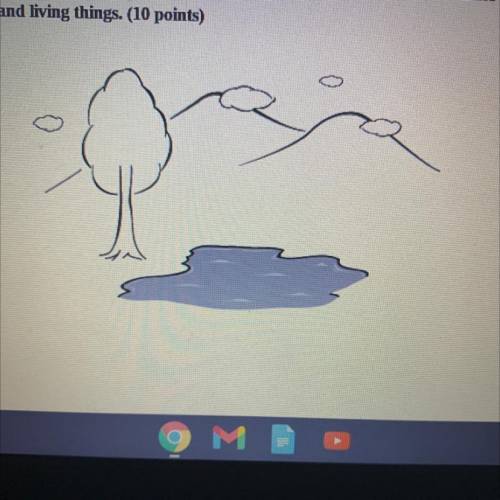
Biology, 03.02.2021 19:40 anisabellanda
Describe how the water cycle moves water between the tree, the lake, and the sky in the picture below.
Describe one water cycle process you have learned about and tell how it shows that the water cycle
connects nonliving and living things.


Answers: 2
Another question on Biology

Biology, 21.06.2019 20:00
Over the past 60 years, many amphibian species have experienced significant population declines and some species have become extinct. scientists suspected that local human activities such as the destruction of wetlands, regional pollution, and deforestation were the main reasons for these losses. however, research over the past 20 years reveals significant amphibian population declines in protected areas of the world, such as nature preserves and parks. these global declines suggest widespread problems including increased ultraviolet radiation, acid rain, and disease. in switzerland, for example, 14 of the 20 native amphibian species are threatened with extinction. chytridiomycosis is a fungal disease first identified in 1998 as a cause of massive amphibian deaths. in some severely impacted populations, a few individuals have survived, perhaps because of some natural resistance. if these resistant individuals continue to survive and prosper, new resistant populations might emerge. this would be an example of the founder effect artificial selection genetic drift natural selection sexual selection
Answers: 3

Biology, 22.06.2019 17:20
If you were given a map of the sensory cortex in the postcentral gyrus of the cerebrum, do you think the map would have more “space” devoted to the regions of the body that have the highest density of sensory receptors, or the regions of the body that have the lowest density of sensory receptors? explain.
Answers: 2

Biology, 22.06.2019 17:40
According to cell theory; which structures carry out the basic function of living things? a. atoms b. organs c. cells b. nuclei
Answers: 2

Biology, 22.06.2019 18:30
Crinoids, also known as sea lilies, appear to be sea plants but are not plants at all. crinoids are an echinoderm species which uses anchoring structures called holdfasts to attach themselves to the sea floor. crinoids were most abundant in pennsylvania during the mississippian period, which ranged from 375 to 320 million years ago. fossils of the crinoids shows that during most of this time pennsylvania was that provided favorable conditions for crinoid growth. a) glacial terrain b) a dry and sandy plain c) mostly mountain ranges d) covered by warm, shallow seas
Answers: 2
You know the right answer?
Describe how the water cycle moves water between the tree, the lake, and the sky in the picture belo...
Questions

Spanish, 21.04.2020 20:26

Computers and Technology, 21.04.2020 20:26

English, 21.04.2020 20:26

English, 21.04.2020 20:26

History, 21.04.2020 20:26

History, 21.04.2020 20:26

English, 21.04.2020 20:26

Mathematics, 21.04.2020 20:26


French, 21.04.2020 20:26







Mathematics, 21.04.2020 20:27


Mathematics, 21.04.2020 20:27

Mathematics, 21.04.2020 20:27



